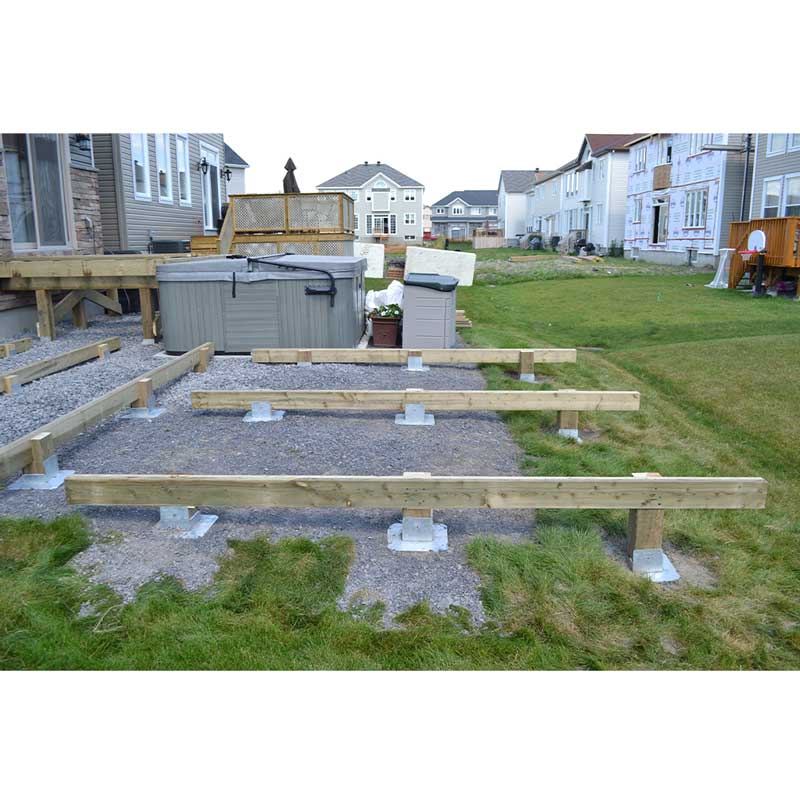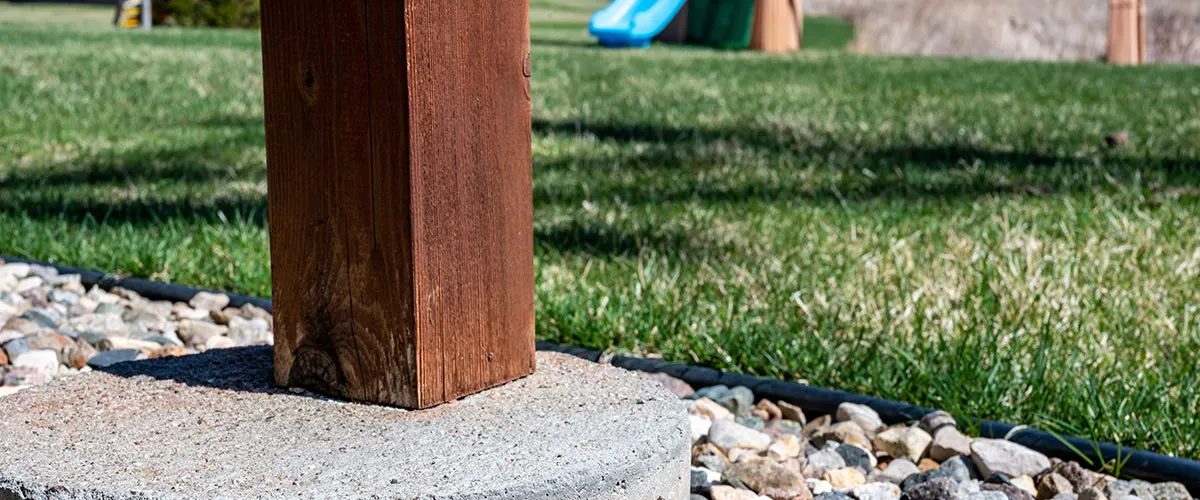Structure Stability: A Guide to Deck Footings for Your Outside Oasis
Structure Stability: A Guide to Deck Footings for Your Outside Oasis
Blog Article
Improve Your Deck's Stability With Correct Deck Footing: Make Certain Resilient Sturdiness and Safety
One key variable that commonly obtains overlooked is the correct setup of deck grounds. These footings serve as the foundation of your deck, giving the essential support and stability to endure the examination of time. In this conversation, we will discover the importance of correct deck ground, guide you with the detailed process of setup, and highlight the importance of regular maintenance to preserve your deck's stability.
Why Correct Deck Ground Matters
Correct deck ground is essential for ensuring the stability and long-lasting longevity of any type of deck structure. The deck ground, or foundation, serves as the support factor for the entire deck, sustaining the weight of the framework and moving it to the ground below - Deck Footings. Without a solid footing, a deck can come to be unstable, causing architectural failing and prospective safety and security hazards

Additionally, correct deck ground aids to shield versus dampness damage. Dampness can seep into the ground and compromise the structure, leading to rotting or degeneration. By utilizing suitable materials and methods for the ground, such as helical heaps or concrete piers, the deck can be elevated above the ground, reducing contact with wetness and extending its life expectancy.
Comprehending the Influence of Dirt Problems
The security and durability of a deck structure can be greatly influenced by the dirt conditions in which it is developed. Comprehending the influence of soil conditions is critical for guaranteeing the resilient longevity and safety of a deck. Various kinds of dirt have differing load-bearing abilities, drain capacities, and growth and tightening buildings, which can all influence the security of the deck.
One essential aspect to consider is the dirt's bearing capability, which describes its ability to sustain the weight of the deck and any added loads. Dirts with high bearing abilities, such as compressed crushed rock or clay, are optimal for supporting hefty frameworks like decks. On the other hand, soils with low bearing capabilities, such as loose sand or soft clay, may call for added actions to improve security, such as deep grounds or dirt stabilization techniques.

In addition, the dirt's tendency to increase and get with changes in moisture content can affect the security of the deck. Dirts with high clay material are prone to substantial development and contraction, which can result in changing and settling of the deck structure. Appropriate actions, such as setting up moisture barriers or using alternate structure systems, may be required to mitigate the impacts of soil motion.
Choosing the Right Footing Materials
What variables should be thought about when selecting the proper footing products for a deck? Choosing the right ground products is important for making certain the security and longevity of a deck. Numerous factors require to be considered when making this decision.
First of all, the kind of soil in the area plays a vital role in determining the ideal ground materials. Different soils have differing load-bearing abilities, so it is essential to choose materials that can sufficiently support the weight of the deck and any type of potential tons it may bear.
Second of all, the climate and weather of the area ought to be considered. In locations with extreme wintertimes or high degrees of moisture, footing materials that are immune to rust and decay, such as concrete or cured wood, are recommended. These products are more durable and much less vulnerable to damage from freezing temperatures, wetness, and insects.
Furthermore, the size and height of the deck additionally influence the selection of footing materials. Larger and taller decks need even more substantial grounds to make sure stability and stop sinking or moving. In such cases, products like concrete footings or helical piers may be much more suitable.
Last but not least, budget plan considerations need to not be forgotten. While some materials may supply exceptional resilience and efficiency, they might additionally include a greater rate tag. When choosing the appropriate ground products for a my website deck., it is crucial to strike an equilibrium in between price and top quality.
Step-by-Step Overview to Setting Up Deck Footings
When installing deck grounds, it is crucial to follow a detailed overview to make read the full info here certain security and longevity. By adhering to these actions, you can make certain that your deck will be able to stand up to the test of time and give a enjoyable and safe outdoor area for many years to find.
The very first step in setting up deck footings is to identify the area and layout of your deck. This consists of measuring and marking the area where the grounds will certainly be positioned. It is essential to make certain that the footings are evenly spaced and aligned with the deck's style.
Next, you will require to dig the holes for the footings. The deepness and diameter of the openings will depend on the dimension and weight of your deck. It is crucial to dig the holes deep enough to reach below the frost line to stop frost heave.
When the holes are dug, you can begin putting the concrete grounds. Make use of a message degree to make certain that the footings are plumb.
After the grounds have been poured, permit the concrete to heal for at least 48 hours prior to continuing with the deck installment. This will guarantee that the grounds have hardened and are all set to support the weight of the deck.
Normal Upkeep to Preserve Deck Security
To keep the security of your deck, regular upkeep is necessary. By executing a routine maintenance routine, you can guarantee that your deck stays risk-free, resilient, and aesthetically appealing.
Cleansing your deck on a regular basis is another crucial maintenance job. Furthermore, regularly using a protective sealant can help avoid wetness damage and prolong the life of your deck.
In enhancement to these routine upkeep tasks, it is also recommended to carry out a comprehensive assessment of the deck's architectural parts a minimum of as soon as a year. This consists of inspecting the problem of the grounds, blog posts, joists, and beam of lights. Any kind of indications of damage or weakness should be dealt with immediately to make sure the continued stability and safety and security of the deck.
Final Thought
In conclusion, proper deck footing is necessary for making sure the long-lasting durability and safety of your deck. By following a detailed guide to setting up deck grounds and routinely preserving them, you can improve your deck's security.
In this discussion, we will certainly discover the importance of proper deck ground, overview you with the step-by-step process of setup, and highlight the relevance of routine upkeep to protect your deck's security.
Proper deck footing is important for making certain the stability and long-term resilience of any kind of deck structure.One of the main factors why proper deck footing issues is to prevent the deck from sinking or changing over time (Deck Footings).In this link conclusion, proper deck footing is crucial for ensuring the resilient sturdiness and security of your deck. By adhering to a step-by-step overview to installing deck grounds and frequently preserving them, you can enhance your deck's stability
Report this page